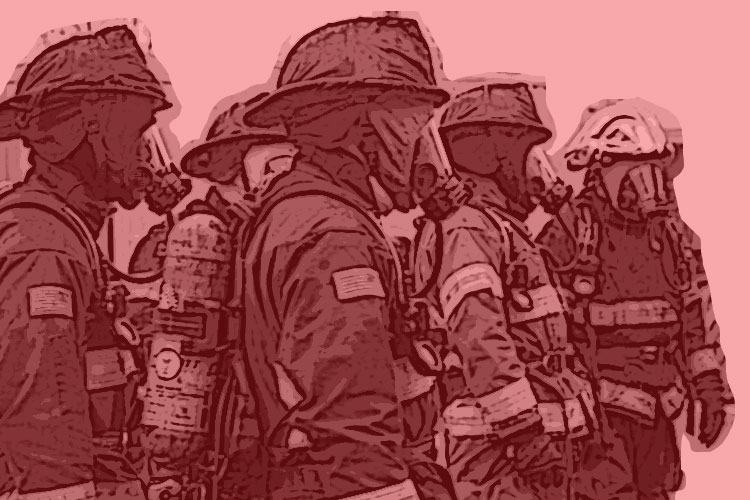
By Todd LeDuc
Firefighting is fraught with inherent health risks that are unique and elevated in accordance with the professional rigors that firefighters face while conducting their essential job functions. Most common health risks include but are not limited to cancer and musculoskeletal, cardiovascular, and behavioral health disorders. The National Fire Protection Association (NFPA) reports that firefighter injuries continue to plague the fire service. The United States Fire Administration reports that the leading cause of “on-duty” firefighter fatalities continues to be sudden cardiac death; an even higher number of sudden cardiac events that are survivable but with lasting life deficits or muscle damage. Additionally, the International Association of Fire Fighters reports that the single largest driver of adding names to their memorial wall in Colorado Springs, Colorado, is occupational cancer deaths. In fact, the National Institute of Occupational Health and Safety has published statistics that firefighters have a 9% higher prevalence of all cancers and 14% higher mortality rate than general population. Finally, it has been reported that firefighters are also at greater risk for behavioral health disorders such as anxiety, sleep disturbance, and chemical dependency, among others, due to repeated traumatic exposures.
To the extent that prevention efforts can be applied to mitigate occupational health risks, a bright light should be shined on modifiable risk. Examples include addressing modifiable risk facts aimed at reducing cardiovascular risk such as weight, physical fitness, and maintaining healthy blood pressure and lipid levels. On the carcinogenic exposure reduction front, common aims include second sets of gear and particulate blocking hoods, on-scene decontamination with wipes and washes, adherence to full respiratory protections, and showering as soon as possible. On the behavioral health side of things, coping strategies such as practicing mindfulness, meditation, yoga, and resiliency/post traumatic growth awareness are all aimed at “human risk reduction” efforts.
The Role of Early Detection and Comprehensive Annual Occupational Physical
The International Association of Fire Chiefs (IAFC) conducted a survey amongst their membership in 2016 that inquired as to whether departments were providing annual medical physicals to their members, and if so, whether they were complaint with NFPA 1582, Standard on Comprehensive Occupational Medical Program for Fire Departments. They also asked if these included any type of behavioral heath screening (s). In short, the findings were that much work remained in ensuring that every firefighter was receiving an appropriate annual medical examination. Career departments were more robust in providing annual medical exams than volunteer and combination departments; many of those providing a medical exam were not consistent with NFPA 1582 and only 10% of those providing exams included any form of behavioral health screenings. This is unfortunate, as the aforementioned occupational disease processes can be managed and mitigated with the best outcomes and with more controlled health care costs. This also led the IAFC to create the “Health Care Providers Guide to Firefighter Physicals” with the aim of giving guidance to primary providers to the unique occupational health risk faced by firefighters and the recommended health screening for this patient population.
NFPA 1582 provides a detailed guided to conducting firefighter incumbent and candidate physical exams. Meanwhile, NFPA 1583, Standard on Health-Related Fitness Programs for Fire Department Members, addresses the fitness assessment unique to the essential job tasks that are required of firefighters.
Comprehensive laboratory blood testing is also conducted as part of the examination process. Particular attention in addition is paid to labs such as comprehensive metabolic panels, lipid profiles, and A1C (there’s also consideration for PSA screening and serum testosterone in male firefighters).
Additionally, increasingly prevalent in the examination of firefighters is the incorporation of ultrasound imaging. In fact, the “Better Heart Study,” funded by Federal Emergency Management Agency grant funding and led by Dr. Denise Smith of Skidmore College, recommends the consideration of cardiac echocardiography and baseline coronary calcification scoring to determine underlining coronary artery disease.
It is important to also note that a department occupational physical is not intended to substitute for a primary care health professional managing the overall total health of the firefighter. An example may be elevated LDL lipids or an elevated A1C glucose reading, which may be identified during the course of the annual examination. The ongoing medical management of these conditions is typically best handled by a primary care health care provider.
In short, early detection saves lives and, combined with risk-mitigation strategies, offers a synergistic approach to managing total firefighter health and wellness.

Todd LeDuc, MS, CFO, FIFirE retired as the executive assistant chief of Broward County, Florida, and joined Life Scan Wellness Centers as their Chief Strategy Officer. He is a reviewer or both professional credentialing and agency accreditation with the Center for Public Safety Excellence and advisory board member of the First Responder Center of Excellence. He is a longtime board member of the International Association of Fire Chief’s Safety, Health & Survival Section and a technical committee member of the NFPA Standard on Occupational Health of First Responders. He is also the editor of the Fire Engineering book, Surviving the Fire Service. He can be contacted at Todd.LeDuc@lifescanwellness.com.

